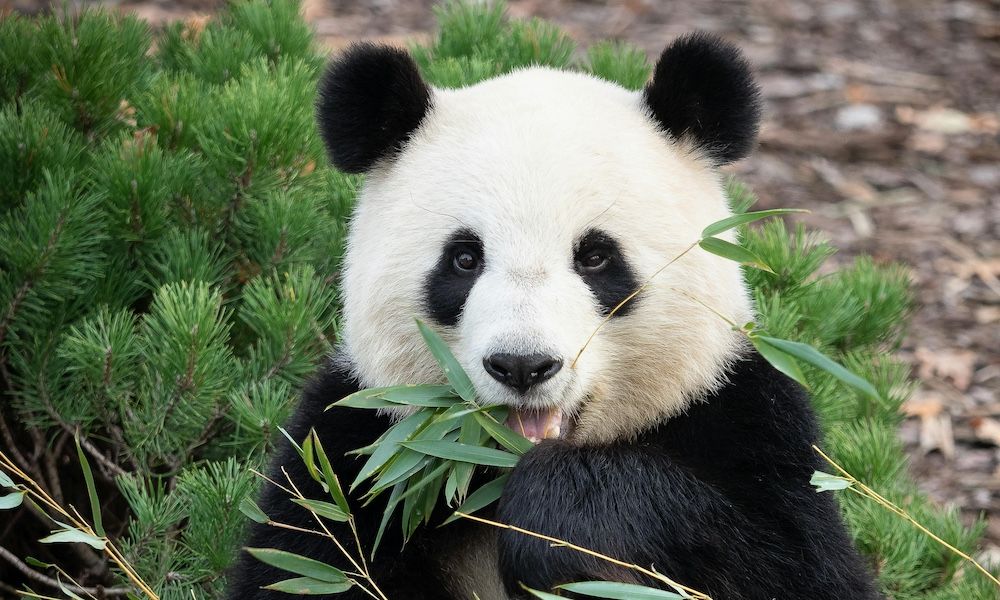Chinese pandas, particularly the giant panda, are one of the most iconic and beloved animals in the world. Giant pandas are easily recognizable by their distinctive black-and-white fur. Their body is covered in white fur with black patches around the eyes, ears, and limbs. They have a round face and a large, robust build. Adult giant pandas typically weigh between 70 to 120 kilograms (150 to 265 pounds), with males generally being larger than females. Cubs are born weighing about 100 to 200 grams (3.5 to 7 ounces).
Giant pandas are native to China, specifically found in the mountain ranges of Sichuan, Shaanxi, and Gansu provinces. They inhabit temperate broadleaf and mixed forests with dense bamboo thickets, which provide both food and shelter. Their habitat ranges from about 1,200 to 3,400 meters (4,000 to 11,000 feet) in elevation. Pandas are primarily bamboo eaters, consuming up to 38 kilograms (84 pounds) of bamboo daily. They eat various parts of the bamboo plant, including leaves, stems, and shoots. Despite being classified as carnivores, giant pandas have adapted to a herbivorous diet. However, their digestive systems are still adapted to digesting meat, and they occasionally eat small animals or carrion.
Giant pandas are solitary animals and typically live alone, except during mating season or when a mother is caring for her cub. They are mostly crepuscular, meaning they are most active during dawn and dusk. Pandas spend a significant portion of their day foraging for bamboo. Female pandas are in estrus (fertile) only once a year for about 2 to 3 days, making breeding a rare event. Males and females may mate several times during this period. The gestation period lasts about 95 to 160 days. Female pandas usually give birth to one or two cubs, though raising twins in the wild is rare. In captivity, zookeepers often take care of the second cub if twins are born.
The giant panda’s primary threats are habitat loss due to deforestation and fragmentation and low reproductive rates. Climate change also poses risks to their bamboo forests. They are classified as "Vulnerable" by the International Union for Conservation of Nature (IUCN). Conservation efforts have included habitat preservation, anti-poaching measures, and breeding programs. These efforts have led to an increase in their population, both in the wild and in captivity.
Giant pandas are considered a national treasure in China and have become symbols of peace and friendship. They are often used in diplomacy, known as "panda diplomacy," where pandas are loaned to other countries as a gesture of goodwill. They have become global symbols and appear in various media, including movies, cartoons, and even as mascots for events like the Beijing 2008 Olympics.




